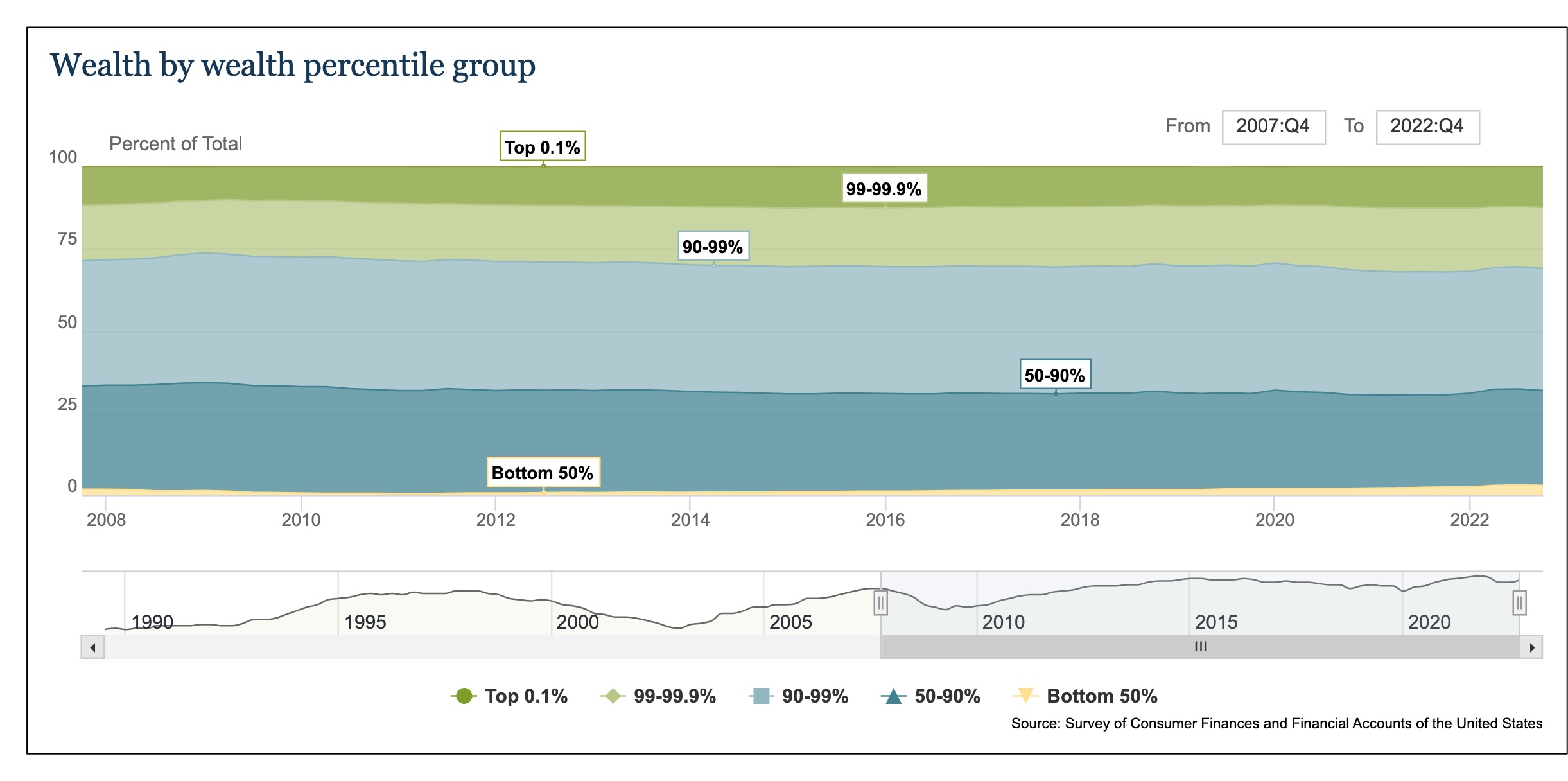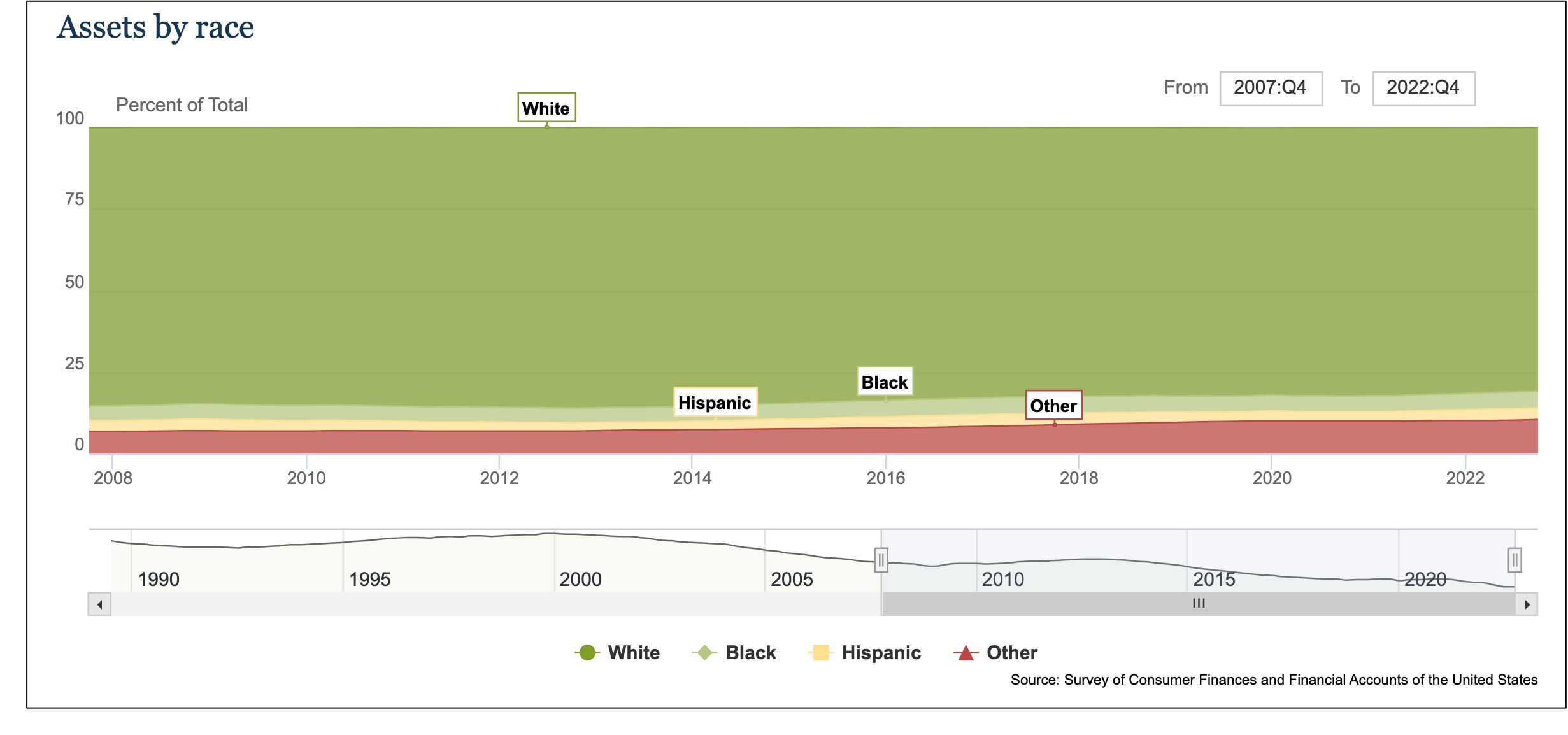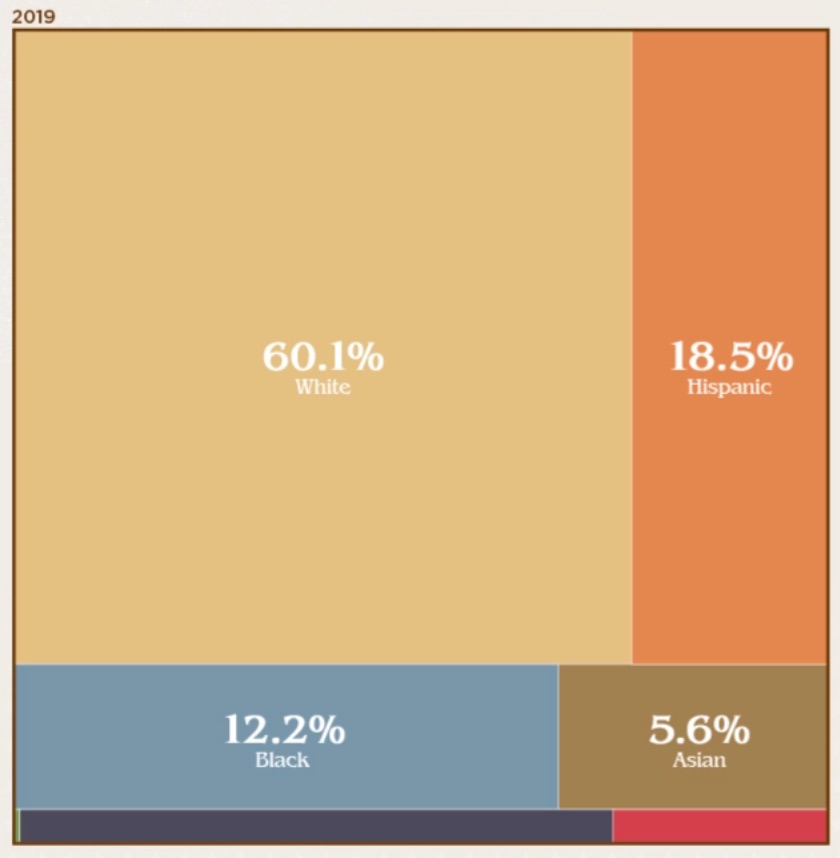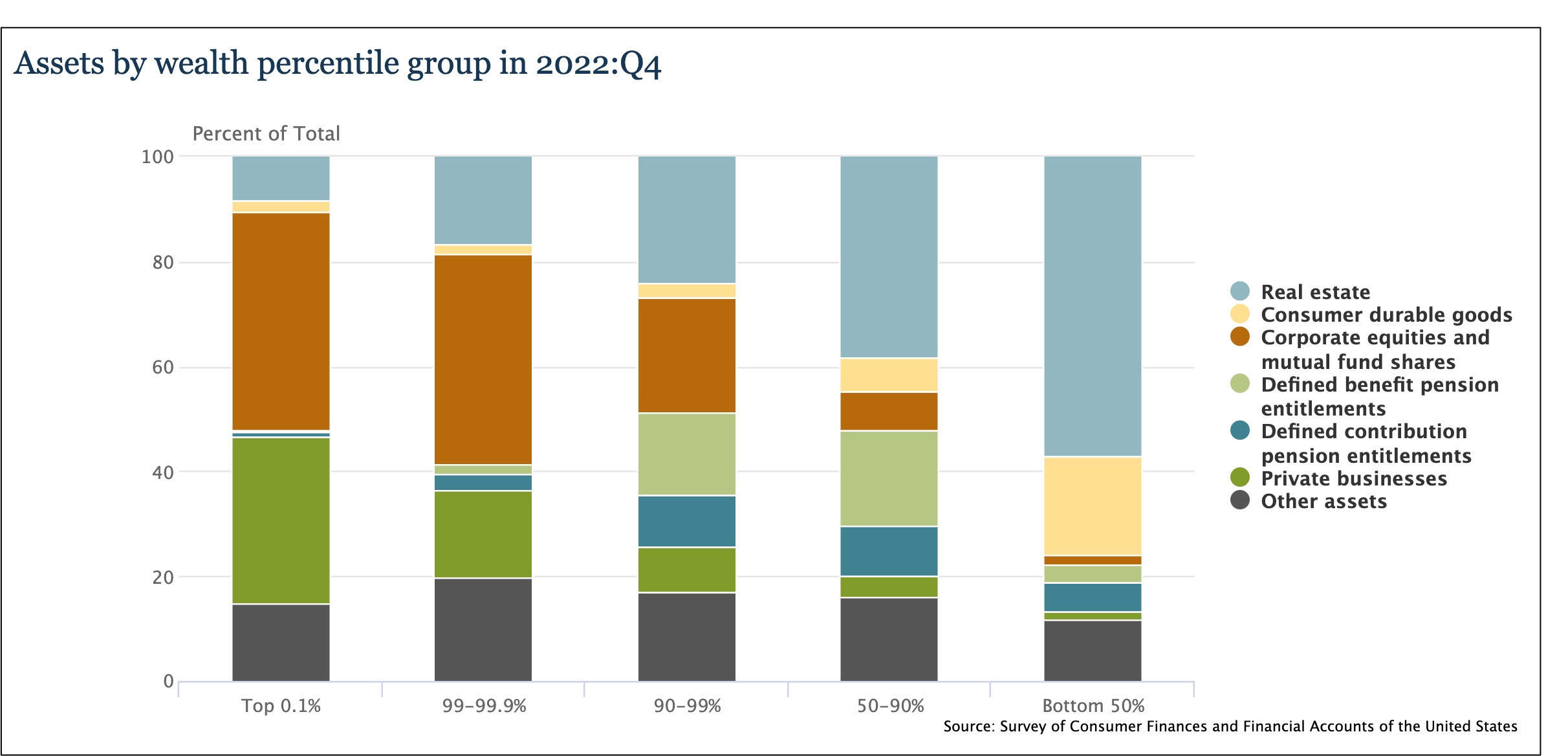Connecticut is almost ready to start its Baby Bond program. Like a 401K for infants, the initiative will establish an investment account for every newborn in households covered by Medicaid. Then, 18 years later, after completing a financial literacy course, as teenagers, those individuals have a list of ways they can use the money that includes buying a house, going to a Connecticut college, and starting a business.
Two years ago, after passing the Baby Bond bill, the Connecticut legislature and the governor disagreed on funding. But now, they decided to move a $381 million budget surpus to a reserve fund from which $3,200 would be allocated to eligible babies born after July 1. They predict that, in 18 years or so, each child will wind up with as much as $24,000. Their goal is to break a cycle of multigenerational poverty.
Where are we going? To redistribution. But first, let’s look at who has the wealth.
U.S. Wealth Distribution
In the United States, wealth is concentrated. Moving downward, we see that the top .1 percent has 12.4% while the top 1 percent is at 18.5%. Still in the top 50 percent, we have more than 90% of the nation’s wealth:
From here, we can ask what the Federal Reserve looks at when they value our wealth. You can see below that real etsate and corporate equities (stocks and bonds) and mutual fund shares top the list. For who has what, the top 1% has the Wall Street investments. Then, as wealth diminishes, a home is the top asset:
Perhaps a bit misleading, the above image has equally high bars although, according to our first graphic, the value of the bottom 50 percent’s wealth is 3% of the nation’s total.
Finally, let’s take a look at race. At 81%, people who are classified as White have most of the nation’s wealth while the Black (5.1%) population, Hispanics (3.5%), and other groups (10.4%) share the remaining 19%:
 But, as a share of the nation’s population, people of color have a far greater proportion:
But, as a share of the nation’s population, people of color have a far greater proportion:

Our Bottom Line: Redistribution
In Equality and Efficiency The Big Tradeoff, economist Arthur Okun explained the tension between capitalism and democracy. Similarly, Nobel laureate Angus Deaton told us that when an economy grows, so too will inequality. However, if we want to reduce the inequality, one solution is redistribution through government taxation and programs that shift wealth from the group that is more affluent to those that have less.
Returning to where we began, one redistribution method is the Baby Bond.
My sources and more: During yesterday’s walk, I learned about Baby Bonds from The Journal podcast while the Federal Reserve amassed the wealth distribution data and the Visual Capitalist did the population graphic. And finally, if you were still wondering about Baby Bonds (as was I), Connecticut has some answers.







